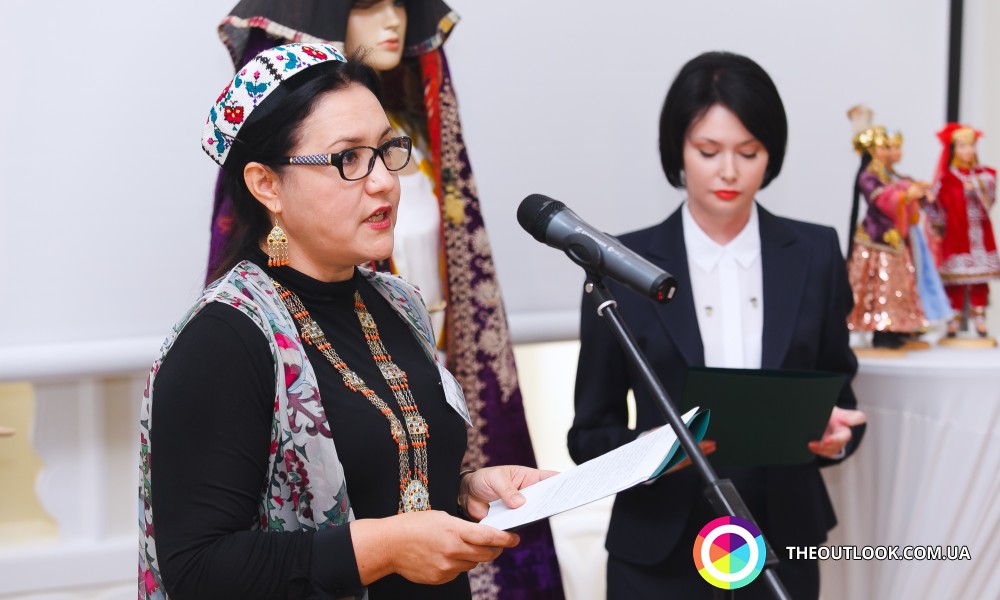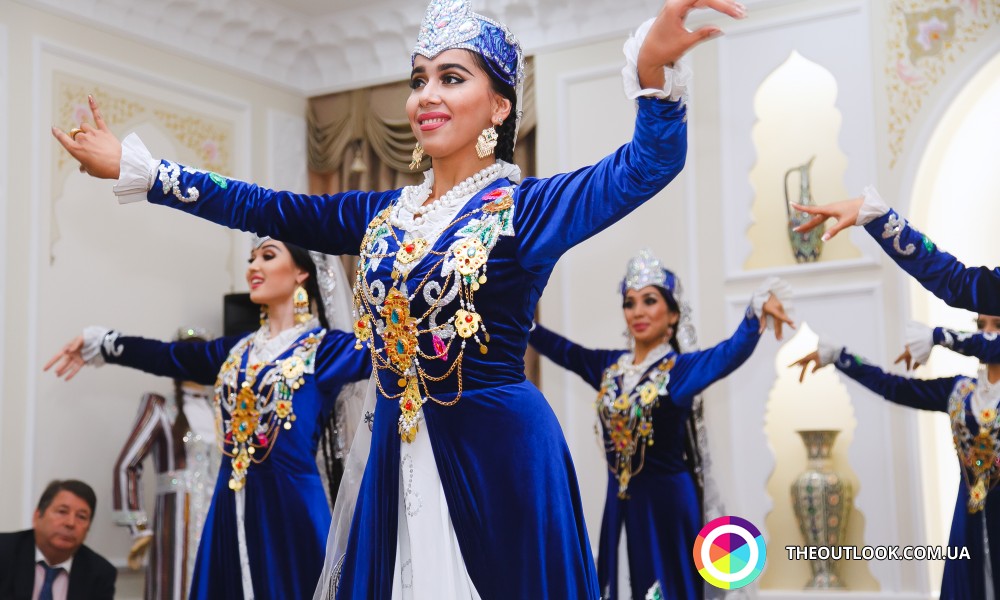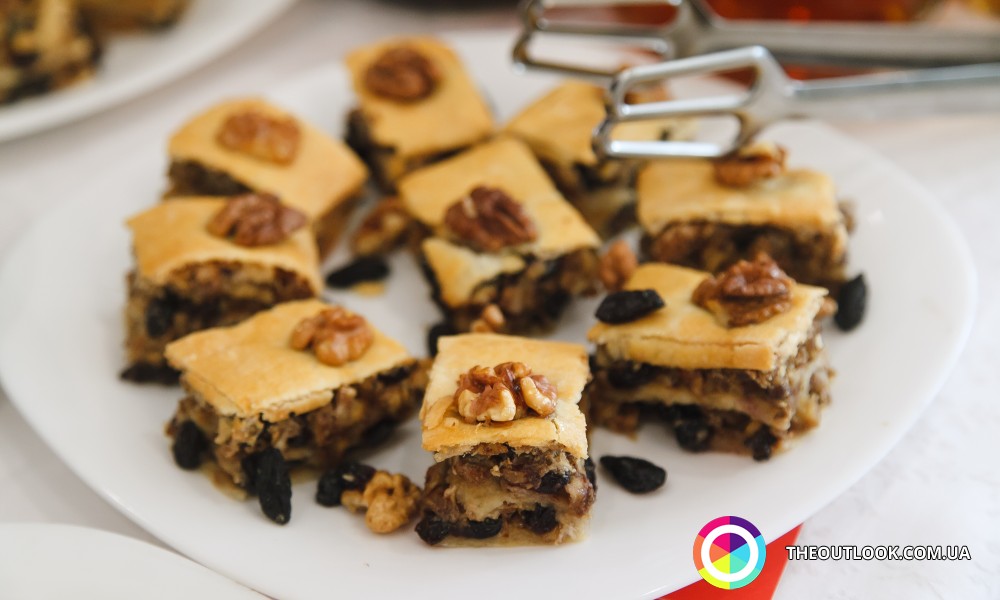Embassy of Uzbekistan in Kiev Warmly Welcomes Ambassador’s Spouses Club Kiev…

It was exactly this aim that Gulnoza Abdualieva – wife of Ambassador Extraordinary and Plenipotentiary of Uzbekistan in Ukraine – was pursuing when she gathered the members. Ceremonial reception was purposely dedicated to Uzbekistan Independence Day. To this meaningful holiday, Mrs. Gulnoza with the support from the Embassy of Uzbekistan decided to bring a piece of East into the capital of Ukraine and introduce guests to her culture through traditional things that are also significant to every woman: outfits, dances and cuisine.
For those who attended the Embassy the host of the meeting prepared an educative film that for several minutes carried everyone over for a walk around amazing parks of Tashkent and Samarkand that assiduously preserves the spirit of antiquity…

Mrs. Gulnoza began her story with presentation of outfits exhibition that reflected special features of different regions of Uzbekistan. The whole spectrum of Eastern distinctiveness reflected in creative approach and skillfulness of Uzbek people greeted eyes of the guests. Ethnic antique-style costumes (paranja and chapan coat) decorated with authentic elements showed unique combination of centuries-old traditions, historic characteristics and way of life…
National clothing for Uzbeks has been of great importance since ancient times; the Great Silk Road exerted special influence on its shaping. Being a trade route, it began in the lands of China, went through Middle East as far as till Mediterranean Sea crossing Sogdian and Bactrian lands that present-time Uzbekistan is located on. Covering such an impressive territory it contributed not just to transfer of goods but also of technologies and ideas; thank to such exchange silk farming and cotton breeding began developing more rapidly in Uzbekistan and consequently so did fabric creation in which, we can safely say, local craftsmen attained perfection! Therefore all the brightness and rave of color of this sunny country got quite literally reflected on cloths from a weaver’s loom!
Uzbek outfits surprises with their variety; relying on color and pattern one can accurately define belonging of each to a region where it was created. In territories of Bukhara and Samarkand velvet in blue and burgundy colors is more frequently used to be richly embroidered with golden thread. In Surxondaryo Region and Karakalpakstan they prefer silk or cotton fabrics decorated with crocheted fragments. For Tashkent and Kokand striped robes that bear elements of European clothing are exemplary while Xorzam costume is distinctive due to abundance of tinkling pendants.

In its turn details that female costume is made of are similar in every part of the state; these are: a robe, a dress, tubeteika or a kerchief, shalwar and paranja that protects a lady from prying eyes. The latter one was even some kind of passport for its owner.
For instance, paranja decorated with generous amounts of embroidered elements suggested wealth of its possessor. Patterns reflected family that a lady belonged to. A married woman could be easily told by connected sleeves while pompons attached to them testified to a number of children. Age of the owner was often defined by color of an outfit. Thus, young girls preferably put on brighter hues while mature ladies – darker shades. Faces of women were covered with chachwans – some sort of coverlets normally woven using horsehair, it favored fine ventilation. Nowadays paranja is off daily custom and is only used for ceremonial purposes during weddings and in funeral corteges.
With genuine interest members of the club were examining adornments demonstrated in the exhibition as a separate display. Age of certain exhibits constituted about a hundred years. It is important that alongside their aesthetic qualities necklaces, strings of beads and earrings had a function of talismans, they were oftentimes quite massive, located in the area of solar plexus and supposed to protect their owner from an evil eye.
But now, under circumstances of modern life, national outfits are more often than not used mostly on stage and during performances. And in order to demonstrate to the guests of the event the way outfits look on representatives of the gentle sex, orchestrators came up with a present in the form of a performance by Sabo choreography group that by means of dancing routines contributed to inimitable aura of the East that reigned in the event.
Uzbek dance is some sort of a monologue of a woman. Eastern woman cannot tell about her feelings using words so she does it via dancing moves. There, just as in Japanese, Chinese and Indian theatres, one has to have expressive eyes and hands that move smoothly and sensually.

And in order to seal acquaintance of the participants of the meeting with cultural distinctives of Uzbekistan, orchestrators of the event treated everyone with traditional dishes, among them pilaf, chuchvara, samosa and Eastern delights. Long history of cuisine is deeply interconnected with history and traditions of the country. Significant influence on its diversity and specific character was exerted by the fact that, unlike geographical neighbors, Uzbeks lived both settled and nomad lives. At the same time, borrowed culinary traditions and mixture of cultures deeply effected diversity and richness of dishes. Origins of many of them have common roots with Asian food like, for instance, manti or pilaf. Taste of spices as well as odor of delicacies garnished the atmosphere of the fest with a light note. Mrs. Gulnoza was eagerly sharing nuances of recipes with everyone interested for them to be able to recreate culinary masterpieces not on in memory but also in own kitchens.





















